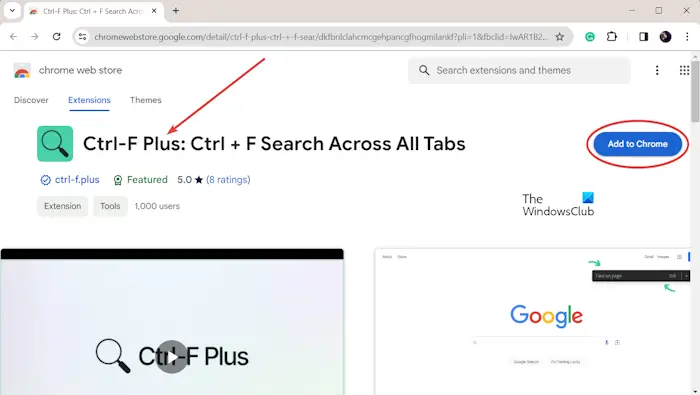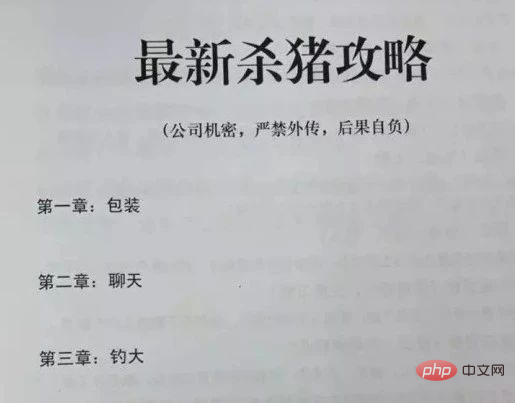 Computer Tutorials
Computer Tutorials Computer Knowledge
Computer Knowledge Understand the application of full-width and half-width in text
Understand the application of full-width and half-width in textFull-width and half-width are commonly used concepts in Chinese word processing. The concepts of full-width and half-width originally originated from the needs of Chinese typesetting and character encoding. In subsequent developments, full-width and half-width were not only used in Chinese text, but were also commonly used in the processing of characters such as English, numbers, and symbols. A correct understanding of the application of full-width and half-width in text is crucial to the accuracy of typesetting and the standardization of word processing.
First of all, the biggest difference between full-width and half-width is the width. In computers, a full-width character usually occupies twice the width of a half-width character. For example, in Chinese characters, a full-width character occupies two character positions, while a half-width character only occupies one character position. This leads to the mixing of full-width and half-width when typesetting and aligning text, which may lead to confusion in typesetting and inaccurate alignment. Therefore, when processing text, you should choose to use full-width or half-width characters according to the specific situation to ensure the overall beauty and accuracy of the text.
Secondly, full-width and half-width also have different applications in input methods and character encoding. In the Chinese input method, it is usually automatically converted to full-width or half-width characters according to the input situation. Generally speaking, the Chinese input method uses full-width characters by default for Chinese characters, and uses half-width characters by default for English, numbers, and symbols. This design meets the needs of Chinese typesetting and facilitates text processing and editing. In character encoding, the difference between full-width and half-width characters is mainly reflected in ASCII encoding and Unicode encoding. Full-width characters are usually encoded in the Unicode full-width font library, while half-width characters are encoded in the ASCII font library.
Finally, full-width and half-width have different uses in different application scenarios. In Chinese typesetting, full-width characters are usually used in scenarios such as titles, first line indentation of paragraphs, numerical amounts, units of measurement, and special typesetting needs to increase the beauty and readability of typesetting. Half-width characters are usually used in scenarios such as numbers, English text, symbols, table alignment, and input forms to facilitate computer processing and display. In daily word processing, the correct use of full-width and half-width characters can also improve the uniformity and professionalism of the document.
In general, understanding the application of full-width and half-width in text is one of the basic knowledge in word processing. By correctly using full-width and half-width characters, the accuracy and beauty of text layout can be improved, and it is also conducive to the standardization and standardization of documents. In future word processing, we should pay attention to the selection and use of full-width and half-width to ensure the quality and readability of the text.
The above is the detailed content of Understand the application of full-width and half-width in text. For more information, please follow other related articles on the PHP Chinese website!
 全角英文字母如何转换为半角英文字母Mar 15, 2024 pm 03:00 PM
全角英文字母如何转换为半角英文字母Mar 15, 2024 pm 03:00 PM转换方法:1、使用 Word 文档的查找替换功能,通过通配符匹配全角英文字母并替换为半角格式;2、使用输入法工具栏上的“全角/半角”切换按钮,将输入法切换为半角状态后重新输入或修改英文字母;3、使用快捷键(如 Windows 系统中的“Shift 空格”)快速切换全角和半角状态。
 全角和半角怎么切换Mar 15, 2024 pm 02:52 PM
全角和半角怎么切换Mar 15, 2024 pm 02:52 PM最常见的方法:1、通过输入法工具栏上的切换按钮;2、使用快捷键(Windows系统为“Shift 空格”,Mac系统为“Option 空格”);3、使用编辑器的替换功能。
 全角和半角的区别Jan 05, 2024 pm 04:27 PM
全角和半角的区别Jan 05, 2024 pm 04:27 PM全角和半角的区别:1、字符的占用空间;2、字符的表示;3、输入法的状态;4、本质区别;5、系统命令的使用。详细介绍:1、字符的占用空间,全角字符占用两个标准字符位置,而半角字符占用一个标准字符位置;2、字符的表示,全角指的是一个字符占用两个标准字符位置,不论是汉字还是其他类型的字符,而半角则是指一个字符占用一个标准的字符位置,通常用于英文字母、数字和符号等等。
 如何在Chrome和Edge的所有选项卡中搜索文本Feb 19, 2024 am 11:30 AM
如何在Chrome和Edge的所有选项卡中搜索文本Feb 19, 2024 am 11:30 AM本教程向您展示了如何在Windows的Chrome或Edge中找到所有打开的标签页上的特定文本或短语。有没有办法在Chrome中所有打开的标签页上进行文本搜索?是的,您可以使用Chrome中的免费外部Web扩展在所有打开的标签上执行文本搜索,无需手动切换标签。一些扩展如TabSearch和Ctrl-FPlus可以帮助您轻松实现这一功能。如何在GoogleChrome的所有选项卡中搜索文本?Ctrl-FPlus是一个免费的扩展,它方便用户在浏览器窗口的所有选项卡中搜索特定的单词、短语或文本。这个扩
 试用新的铃声和文本提示音:在 iOS 17 的 iPhone 上体验最新的声音提醒功能Oct 12, 2023 pm 11:41 PM
试用新的铃声和文本提示音:在 iOS 17 的 iPhone 上体验最新的声音提醒功能Oct 12, 2023 pm 11:41 PM在iOS17中,Apple彻底改变了其全部铃声和文本音调选择,提供了20多种可用于电话、短信、闹钟等的新声音。以下是查看它们的方法。与旧铃声相比,许多新铃声的长度更长,听起来更现代。它们包括琶音、破碎、树冠、小木屋、啁啾、黎明、出发、多洛普、旅程、水壶、水星、银河系、四边形、径向、清道夫、幼苗、庇护所、洒水、台阶、故事时间、戏弄、倾斜、展开和山谷。反射仍然是默认铃声选项。还有10多种新的文本提示音可用于传入短信、语音邮件、传入邮件警报、提醒警报等。要访问新的铃声和文本铃声,首先,请确保您的iPh
 利用大模型打造文本摘要训练新范式Jun 10, 2023 am 09:43 AM
利用大模型打造文本摘要训练新范式Jun 10, 2023 am 09:43 AM1、文本任务这篇文章主要讨论的是生成式文本摘要的方法,如何利用对比学习和大模型实现最新的生成式文本摘要训练范式。主要涉及两篇文章,一篇是BRIO:BringingOrdertoAbstractiveSummarization(2022),利用对比学习在生成模型中引入ranking任务;另一篇是OnLearningtoSummarizewithLargeLanguageModelsasReferences(2023),在BRIO基础上进一步引入大模型生成高质量训练数据。2、生成式文本摘要训练方法和
 win7系统无法打开txt文本怎么办Jul 06, 2023 pm 04:45 PM
win7系统无法打开txt文本怎么办Jul 06, 2023 pm 04:45 PMwin7系统无法打开txt文本怎么办?我们电脑中需要进行文本文件的编辑时,最简单的方式就是去使用文本工具。但是有的用户却发现自己的电脑无法打开txt文本文件了,那么这样的问题要怎么去解决呢?一起来看看详细的解决win7系统无法打开txt文本教程吧。解决win7系统无法打开txt文本教程 1、在桌面上右键点击桌面的任意一个txt文件,如果没有的可以右键点击新建一个文本文档,然后选择属性,如下图所示: 2、在打开的txt属性窗口中,常规选项下找到更改按钮,如下图所示: 3、在弹出的打开方式设置
 网聊一个月,杀猪盘骗子竟被AI整破防!200万网友大呼震撼Apr 12, 2023 am 09:40 AM
网聊一个月,杀猪盘骗子竟被AI整破防!200万网友大呼震撼Apr 12, 2023 am 09:40 AM说起「杀猪盘」,大家肯定都恨得牙痒痒。在这类交友婚恋类网络诈骗中,骗子会提前物色好容易上钩的受害者,而她们,往往是单纯善良、对爱情怀有美好幻想的高知乖乖女。而为了能和这些骗子大战500回合,B站大名鼎鼎的科技圈up主「图灵的猫」训练了一个聊起天来频出爆梗,甚至比真人还6的AI。结果,随着AI的一通操作,骗子竟然被这个以假乱真的小姐姐搞得方寸大乱,直接给「她」转了520。更好笑的是,发现根本无机可乘的骗子,最后不仅自己破了防,还被AI附送一段「名句」:视频一出,立刻爆火,在B站冲浪的小伙伴们纷纷被


Hot AI Tools

Undresser.AI Undress
AI-powered app for creating realistic nude photos

AI Clothes Remover
Online AI tool for removing clothes from photos.

Undress AI Tool
Undress images for free

Clothoff.io
AI clothes remover

AI Hentai Generator
Generate AI Hentai for free.

Hot Article

Hot Tools

EditPlus Chinese cracked version
Small size, syntax highlighting, does not support code prompt function

Safe Exam Browser
Safe Exam Browser is a secure browser environment for taking online exams securely. This software turns any computer into a secure workstation. It controls access to any utility and prevents students from using unauthorized resources.

Dreamweaver CS6
Visual web development tools

SublimeText3 Linux new version
SublimeText3 Linux latest version

mPDF
mPDF is a PHP library that can generate PDF files from UTF-8 encoded HTML. The original author, Ian Back, wrote mPDF to output PDF files "on the fly" from his website and handle different languages. It is slower than original scripts like HTML2FPDF and produces larger files when using Unicode fonts, but supports CSS styles etc. and has a lot of enhancements. Supports almost all languages, including RTL (Arabic and Hebrew) and CJK (Chinese, Japanese and Korean). Supports nested block-level elements (such as P, DIV),





